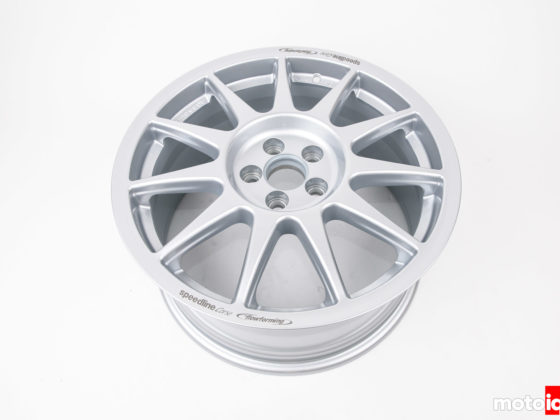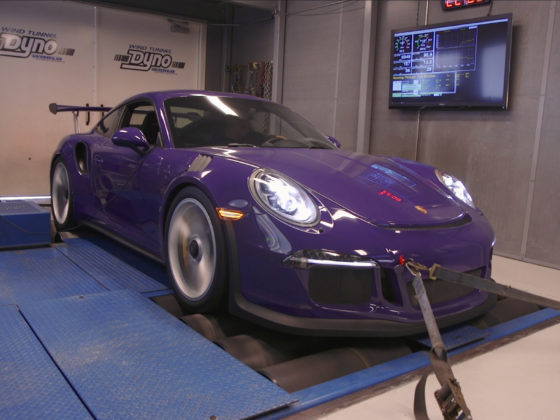
This guy named Dave Coleman gave the tech overview on the unique turbo technology employed by Mazda along with the i-ACTIV AWD and updated G-Vectoring. You may have of heard of him and his Project Miatabusa.

Mazda is very focused on how a car FEELS to drive. The human-machine interaction and how the car feels is what separates an entertaining and interactive car from a boring car. So, Mazda spends a lot of time observing how people drive their cars. This is also known as observational Voice of Customer (VOC) in the engineering biz. In everyday driving, the engine spends most of its time in the 1500-2000 rpm range just lounging around and saving gas; i.e represented by the ‘force required just to maintain speed’ line in the plot. In the situation of freeway passing with an initial speed of 55 mph, Mazda has determined the average driver requests about 325 kgf of driving force in order to have the desired acceleration rate in this size vehicle. 325 kgf of driving force would accelerate a Miata much more quickly. My wife’s 2.5L SKYACTIV naturally aspirated engine is rated for a peak torque of 185 lb-ft and it would have to downshift into 4th gear in order to have enough drive force at the tire to give the desired rate of acceleration. However, with the new turbo engine and its peak of 310 lb-ft of torque at a lowly 2000 rpm, the transmission can stay in 6th gear. The importance of staying in 6th gear is it avoids the acceleration interruption/jerkiness and time delay of having to downshift two gears. Mazda also feels with their torque curve, they can use only six speeds instead of eight or ten avoiding a whole lot of shifting which disrupts the feel. So big torque at low engine speeds enables immediate response to throttle input in this common acceleration scenario. Very electric vehicle-like in feel actually.

Mazda publishes two horsepower numbers for the 2.5T engine depending on fuel octane. 93 octane gets you 250 hp whereas regular 87 octane will net 227 hp. Cali 91 octane will get something in between. Of importance is the torque curve which is exactly the same regardless of fuel octane below 4000 rpm. So for those who rarely go into the upper reaches of the tachometer, money can be saved at the pump with no effect on daily driving performance. So how does Mazda achieve this high torque at low rpm? And how do they address the issues of turbo lag which would detract from the feel of smooth acceleration?

Mazda developed this ‘dynamic pressure turbo system’ employing two important concepts: variable flow area and exhaust scavenging by way of ejector effect. Other technologies that have been implemented in the past to combat turbo lag in a similar fashion has been a VGT/VNT (Variable Geometry Turbine in Borg-Warner speak, Variable Nozzle Turbine in Garrett speak). Until recently, only the Porsche 911 Turbo has gotten VGT turbos on a gasoline engine as the vanes and rings and all the moving things in the turbine housing required exotic and expensive materials to prevent from seizing up and failing at high gasoline exhaust temperatures. There are newer and cheaper gasoline VNT turbos now from Garrett which are paired with VW and GM engines which have to be combined with engines running Miller Cycle which helps bring down the exhaust temperatures. Either way, VGT/VNT turbos have a lot of moving parts in the turbine housing which drives up cost, complexity, and durability issues from many wear points in the mechanisms. Another technology used back in the day by Honda/Acura was a variable A/R turbine housing. The turbine housing used a flapper valve to divert flow to inner and outer flow paths which where created by a wall and vanes cast into the volute. Looking at the design, it looks difficult to cast, probably had poor turbine efficiency, and lots of places for cracks to start to form from thermal cycling. It’s probably telling Honda/Acura only used the technology for one generation on the RDX before ditching it. The Mazda design uses a twin-entry flange with one port being small in cross-sectional area and the other being large for high flow. No difficult to cast, low durability, flow impeding walls and vanes down in the volute of the turbine housing. Below 1600 rpm, valves close off the big port flow paths forcing all the flow into the small port. Good ole Fluid Mechanics tells us that for a constant mass flow of fluid, the velocity of fluid will accelerate when you reduce the cross-sectional area it flows through. So, the thumb over the end of the garden hose. So that’s how Mazda attacked the issue of turbo lag.




7 comments
The driving force graph makes no sense.
F=ma
Not F=m
Probably marketing person just mislabeling what should be kgf. Which I need to fix myself… will edit. Thanks for the catch.
Looking at the graph a little more closely now, looks like about 75kgf to maintain speed and 325kgf to have desired acceleration. So 250kgf is about 2450N going towards acceleration and a vehicle mass of 1750kg. Works out to about 1.4 m/s^2. 1.4 m/s = 3.13mph. So…. increase almost 10mph in 3 seconds. Seems like a reasonable acceleration rate for this passing scenario.
Thanks for the clarification.
Why Mazda didn’t take full advantage of their ‘dyanamic pressure turbo’ system by squeezing out more top end power without sacrificing low end torque and causing turbo lag?
They would have to go to a bigger turbo to get more power on the top-end. That would not allow them to meet their torque target at 2000rpm where they are focused on driveability because that’s where their users spend like 97% of their time.
Ok I see, I just wish they have a more performance orientated option as well.
Does the low end and mid range performance feel more like a big, torquey naturally aspirated engine than a typical turbocharged engine?
Funny thing about that stability control: I noticed that my 2018 Mazda MX-5 GT will quite happily do donuts, which isn’t quite possible with an open differential. Sure enough, the tail end only whips out once a light on the dashboard starts blinking: the ABS is transferring the torque to the opposite wheel, even though stability control is off, in order to facilitate irresponsible driving.
Also, since I couldn’t find it on paper anywhere: the headlamps turn to see around corners, though mine inexplicably lacks the levelling system.